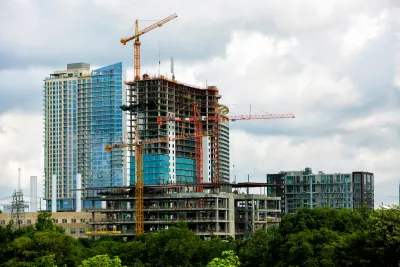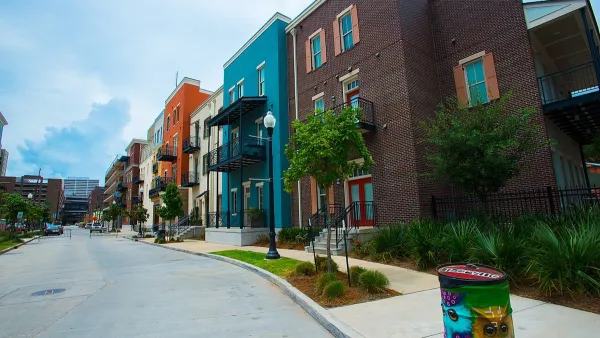A century-old law calls for a three-fourths vote to approve new projects when neighbors oppose the project, blocking affordable housing and multifamily developments.

A Texas state law requires a supermajority (three-fourths) vote in city councils to approve zoning amendments “when property owners of more than 20% of the adjacent property are opposed to the change in zoning” regardless of how many property owners are adjacent to the property in question, effectively killing many housing developments, according to reporting by Iris Dimmick in the San Antonio Report.
Under the current law, “The voices of current property owners have higher priority under the valid petition law than the potential tenants or beneficiaries of affordable housing.” San Antonio Mayor Ron Nirenberg supports eliminating the supermajority rule, noting that “Placing a supermajority threshold for the purposes of giving some members of the community an outsized voice to exclude people is, in my view, anti-democratic.”
Zoning amendments are the only type of change that requires a 75 percent supermajority, Dimmick adds. “Examples across the state show that the valid petition law has interfered with several affordable housing projects, from a single garage apartment, to multifamily projects like Vista Park and acres of single-family homes.”
The ‘valid petition’ law can be traced back to a 1920s New York City zoning ordinance that became part of the federal Standard State Zoning Enabling Act, which stemmed from the desire of Fifth Avenue merchants to exclude Jewish businesspeople from opening shop near them. Today, at least 20 states have a valid petition process on the books.
According to researcher Salim Furth, the law has a chilling effect on new multifamily development, even when it is not officially used to block a project. For housing activists, reforming the law would clear up a bottleneck for new housing development and prevent a small number of property owners from blocking new affordable housing.
FULL STORY: How a 100-year-old, ‘anti-democratic’ law is killing Texas housing projects

National Parks Layoffs Will Cause Communities to Lose Billions
Thousands of essential park workers were laid off this week, just before the busy spring break season.

Retro-silient?: America’s First “Eco-burb,” The Woodlands Turns 50
A master-planned community north of Houston offers lessons on green infrastructure and resilient design, but falls short of its founder’s lofty affordability and walkability goals.

Delivering for America Plan Will Downgrade Mail Service in at Least 49.5 Percent of Zip Codes
Republican and Democrat lawmakers criticize the plan for its disproportionate negative impact on rural communities.

Test News Post 1
This is a summary

Test News Headline 46
Test for the image on the front page.

Balancing Bombs and Butterflies: How the National Guard Protects a Rare Species
The National Guard at Fort Indiantown Gap uses GIS technology and land management strategies to balance military training with conservation efforts, ensuring the survival of the rare eastern regal fritillary butterfly.
Urban Design for Planners 1: Software Tools
This six-course series explores essential urban design concepts using open source software and equips planners with the tools they need to participate fully in the urban design process.
Planning for Universal Design
Learn the tools for implementing Universal Design in planning regulations.
EMC Planning Group, Inc.
Planetizen
Planetizen
Mpact (formerly Rail~Volution)
Great Falls Development Authority, Inc.
HUDs Office of Policy Development and Research
NYU Wagner Graduate School of Public Service





























